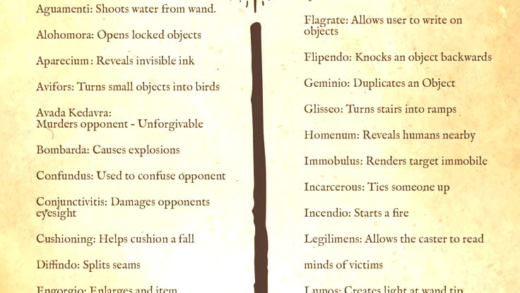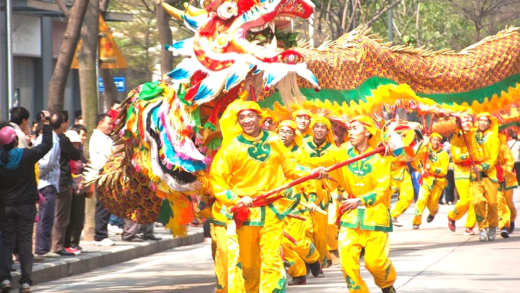Ghosts are perceived differently across cultures, often tied to emotional states and historical contexts. Many haunted locations around the world, like the Tower of London and the Stanley Hotel, attract ghost hunters and curious visitors. Ghost hunting involves using tools like EVP recorders and infrared cameras to detect paranormal activity. Famous ghost stories, such as the Headless Horseman and La Llorona, showcase how these tales reflect societal fears and beliefs.
What Are Ghosts?
Ghosts are often defined as the spirits or souls of deceased individuals who have not yet moved on to the afterlife. They are typically characterized by their ability to appear in various forms, often as translucent figures or orbs of light. In many cultures, ghosts are seen as manifestations of unresolved issues or lingering emotions from their lives. The concept of ghosts can vary significantly across different societies, leading to diverse interpretations and beliefs.
Characteristics of ghosts frequently include:
- Visual apparitions, which can be seen by the living.
- Auditory phenomena, such as whispers or footsteps.
- Physical sensations, like sudden chills or the feeling of being watched.
- Interactions with the environment, including moving objects or flickering lights.
Understanding what constitutes a ghost in various contexts helps us grasp how deeply ingrained these beliefs are in human culture.
Cultural Perceptions of Ghosts
Cultural perceptions of ghosts reveal a rich tapestry of beliefs and traditions. In Western cultures, ghosts are often depicted as malevolent spirits seeking revenge or resolution. Conversely, in many Asian cultures, ghosts may serve as protectors or guardians of the family. For instance, in Chinese tradition, ancestral spirits are revered and honored during festivals like Qingming.
Some notable cultural views include:
- In Japan, Yūrei are spirits who have not found peace and may haunt specific locations.
- In Mexican culture, the Day of the Dead celebrates deceased loved ones, inviting their spirits back to the living world.
- African traditions often include ancestor worship, where spirits are believed to provide guidance and protection.
These varied perspectives highlight the diversity of beliefs regarding ghosts across the globe, showing how deeply cultural contexts influence the understanding of the supernatural.
Scientific Explanations for Ghost Sightings
Scientific perspectives on ghost sightings often suggest that many experiences attributed to ghosts can be explained by psychological and environmental factors. Researchers have proposed several theories to explain why people claim to see ghosts, including:
- Sleep paralysis, where individuals experience temporary inability to move upon waking, often accompanied by hallucinations.
- Infrasound, low-frequency sounds that can cause feelings of unease or fear, potentially leading to ghost sightings.
- Psychological factors, such as grief or trauma, which can lead individuals to perceive ghostly encounters as a form of comfort.
These logical explanations for ghost sightings may seem to undermine the supernatural aspects of ghostly encounters but also provide a fascinating insight into human perception and belief.
Reasons for Believing in Ghosts
Belief in ghosts is widespread, influenced by various psychological and emotional factors. People often turn to the supernatural during times of grief or trauma. This need for connection can lead individuals to perceive ghostly encounters as comforting, offering a sense of reassurance that loved ones are still present.
Several reasons contribute to the belief in ghosts:
- Fear of Death: Many individuals fear the unknown aspects of death, leading them to believe in ghosts as a way to cope with mortality.
- Personal Experiences: Personal stories and experiences, often shared within families or communities, reinforce beliefs in ghosts.
- Cultural Influences: Societal norms and cultural traditions play a significant role in shaping beliefs about the supernatural.
- Psychological Comfort: Ghosts can serve as a psychological anchor for those grieving, providing a sense of ongoing connection with the deceased.
This blend of emotional needs and cultural context helps explain why people continue to believe in ghosts, even when faced with scientific explanations.
Common Characteristics of Ghosts
Ghosts exhibit several common characteristics that make them recognizable across different cultures and stories. These traits help define what a ghost is and how it interacts with the living. Understanding these characteristics can deepen our knowledge of ghostly phenomena.
Some typical characteristics include:
- Appearance: Ghosts are often described as translucent or shadowy figures, sometimes resembling their living forms.
- Sounds: Many ghostly encounters involve unexplained noises, such as whispers, moans, or footsteps.
- Temperature Changes: Sudden drops in temperature are frequently reported during ghost sightings, suggesting a supernatural presence.
- Movement: Ghosts may interact with their environment, causing objects to move or lights to flicker, which adds to their eerie reputation.
These characteristics help shape the public’s perception of ghosts, making them a fascinating subject in both folklore and modern ghost hunting.
Can Ghosts Communicate?
The question of whether ghosts can communicate with the living is a topic of great interest and debate. Many believers claim to have experienced direct communication with spirits, while skeptics often attribute these experiences to psychological phenomena.
Claims of ghost communication often include:
- Electronic Voice Phenomena (EVP): Recordings capturing unexplained voices are often cited as evidence of ghostly communication.
- Mediums: Some individuals claim to possess the ability to communicate with ghosts, providing messages from the deceased to the living.
- Physical Signs: Some people report receiving signs or messages through objects or occurrences, believed to be orchestrated by spirits.
These claims, while intriguing, often lack empirical support. However, they continue to captivate the imagination and fuel the ongoing fascination with the possibility of communication with the dead.
The Role of Emotions in Ghost Encounters
Emotions play a significant role in shaping ghost encounters. Many individuals report heightened emotional states during ghostly experiences, which can influence their perceptions and interpretations of these events. For example, feelings of grief, fear, or nostalgia can intensify the sensation of a ghostly presence. People might see or feel a ghost when they are particularly sad or stressed, as their emotional state can create a heightened awareness of their surroundings.
Some key aspects include:
- Grief and Loss: When someone loses a loved one, they may feel a strong emotional connection, leading them to perceive signs or visitations from the deceased.
- Fear Response: Fear can trigger vivid imaginations, causing individuals to misinterpret ordinary occurrences as ghostly activities.
- Emotional Memories: Locations tied to strong memories can evoke feelings that may be interpreted as encounters with spirits.
This emotional connection to ghost encounters suggests that our feelings can shape our experiences of the supernatural, often blurring the lines between reality and perception.
Most Haunted Places
Many locations around the world are renowned for their paranormal activity and ghost stories. These sites often attract ghost hunters, thrill-seekers, and curious tourists eager to experience the supernatural. Each haunted place has its unique history and legends that contribute to its eerie reputation.
Some of the most famous haunted places include:
- The Tower of London: Known for its dark history, including executions, this site is said to be haunted by the spirits of those who lost their lives there.
- Eastern State Penitentiary: Once home to notorious criminals, this abandoned prison is famous for ghost sightings and eerie sounds.
- The Stanley Hotel: This Colorado hotel inspired Stephen King’s “The Shining” and is known for its ghostly apparitions and strange occurrences.
- Gettysburg Battlefield: The site of a major Civil War battle, many visitors report seeing apparitions of soldiers and hearing ghostly sounds.
These haunted locations not only provide thrilling ghost stories but also offer insights into the historical events that shaped them, making them fascinating sites for exploration.
Ghost Hunting Investigations
Ghost hunting investigations involve various methods and tools designed to detect paranormal activity. These investigations often combine technology with traditional ghost hunting techniques, allowing enthusiasts to explore purportedly haunted locations.
Common tools used in ghost hunting include:
- Electronic Voice Phenomena (EVP) Recorders: These devices capture sounds that may be voices of spirits.
- Infrared Cameras: Used to detect changes in temperature and capture visual evidence of ghosts.
- EMF Meters: These measure electromagnetic fields, which are often associated with ghostly presences.
- Spirit Boxes: Devices that scan radio frequencies, allowing for potential communication with spirits.
Ghost hunting combines scientific inquiry with folklore, providing a thrilling way to explore the unknown and uncover the mysteries surrounding ghostly phenomena.
Famous Ghost Stories and Legends
Throughout history, countless ghost stories and legends have captivated audiences, blending fact and fiction. These tales often reflect cultural beliefs and societal fears, providing entertainment while sparking the imagination.
Some well-known ghost stories include:
- The Headless Horseman: This legend from Washington Irving’s “The Legend of Sleepy Hollow” tells of a ghostly figure who roams the countryside.
- The Bell Witch: A famous American haunting, this story involves a spirit that tormented the Bell family in Tennessee during the early 19th century.
- La Llorona: A Mexican folktale about a weeping woman who wanders near water, searching for her lost children.
- Anne Boleyn: The ghost of Henry VIII’s second wife is said to haunt the Tower of London, often seen wandering the grounds.
These captivating narratives not only entertain but also reflect the cultural contexts in which they originated, keeping the fascination with ghosts alive across generations.





Comments are closed.